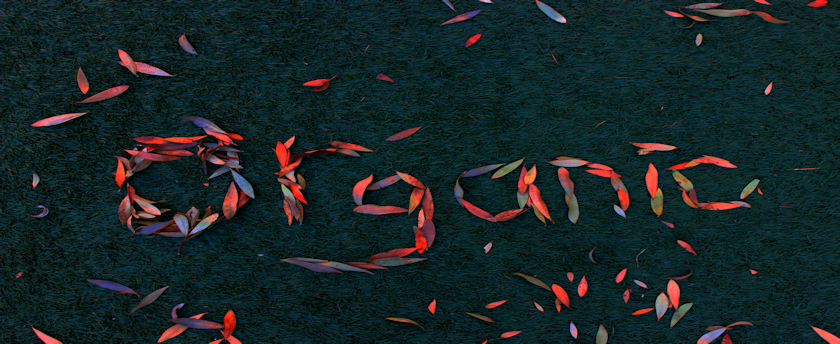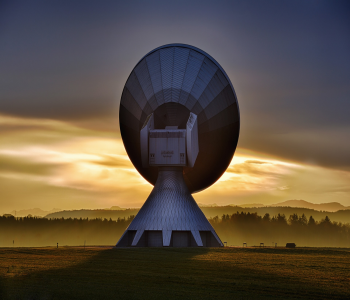
Most organic farms largely avoid pesticides as opposed to conventional farms. Some pesticides damage the environment or with direct exposure, human health. Children exposed to pesticides are of special concern.
According to the National Academy of Sciences:
The five main pesticides used in organic farming are Bt (a bacterial toxin), pyrethrum, rotenone, copper and sulfur. Fewer than 10% of organic vegetable farmers acknowledge using these pesticides regularly; 5.3% of vegetable growers will admit rotenone use; while 1.7% admit pyrethrum use (Lotter 2003:26). Reduction and elimination of chemical pesticide use is technically challenging. Organic pesticides often complement other pest control strategies.
Organic Nutrients and Mediums
Nutrient Solutions
Plant nutrients used in hydroponics are dissolved in the water and are mostly in inorganic and ionic form. Primary among the dissolved cations (positively charged ions) are Ca2+ (calcium), Mg2+ (magnesium), and K+ (potassium); the major nutrient anions in nutrient solutions are NO−
• 3 (nitrate), SO2−
•4 (sulfate), and H2PO−
•4 (dihydrogen phosphate).
Numerous 'recipes' for hydroponic solutions are available. View our Organic Fertilizers page for some of the best. Or you can see our complete line of "True Organic" Nutrients
Many use different combinations of chemicals to reach similar total final compositions. Commonly used chemicals for the macronutrients include potassium nitrate, calcium nitrate, potassium phosphate, and magnesium sulfate. Various micronutrients are typically added to hydroponic solutions to supply essential elements; among them are Fe (iron), Mn (manganese), Cu (copper), Zn (zinc), B (boron), Cl (chlorine), and Ni (nickel). Chelating agents are sometimes used to keep Fe soluble. Many variations of the nutrient solutions used by Arnon and Hoagland (see above) have been styled 'modified Hoagland solutions' and are widely used. Variation of different mixes throughout the plant life-cycle, further optimizes its nutritional value.[15] Plants will change the composition of the nutrient solutions upon contact by depleting specific nutrients more rapidly than others, removing water from the solution, and altering the pH by excretion of either acidity or alkalinity. Care is required not to allow salt concentrations to become too high, nutrients to become too depleted, or pH to wander far from the desired value.
Although pre-mixed concentrated nutrient solutions are generally purchased from commercial nutrient manufacturers by hydroponic hobbyists and small commercial growers several tools exists to help anyone prepare their own solutions without extensive knowledge about chemistry. The free and open source tools HydroBuddy and HydroCal have been created by professional chemists to help any hydroponics grower prepare their own nutrient solutions. The first program is available for Windows, Mac and Linux while the second one can be used through a simple java interface. Both programs allow for basic nutrient solution preparation although HydroBuddy provides added functionality to use and save custom substances, save formulations and predict electrical conductivity values. Science and Technology of Organic Farming is a comprehensive book on Organic Farming Methods.
The well-oxygenated and enlightened environment promotes the development of algae. It is therefore necessary to wrap the tank with black film obscuring all light.
Mediums
- Expanded Clay
- Rock Wool
- Coir
- Perlite
- Pumice
- Sand
- Gravel
- Brick Shards
- Polystrene Packin Peaunuts
- Wood Fibre
One of the most obvious decisions hydroponic farmers have to make is which medium they should use. Different media are appropriate for different growing techniques.
Expanded clay (Ex-clay)
Hydroton brand expanded clay pebbles. Baked clay pellets, also known under the trademarks 'Hydroton' or 'Hydrokorrels' or 'LECA' ("lightweight expanded clay aggregate"), are suitable for hydroponic systems in which all nutrients are carefully controlled in water solution. The clay pellets are inert, pH neutral and do not contain any nutrient value.
The clay is formed into round pellets and fired in rotary kilns at 1,200 °C (2,190 °F). This causes the clay to expand, like popcorn, and become porous. It is light in weight, and does not compact over time. Shape of individual pellet can be irregular or uniform depending on brand and manufacturing process. The manufacturers consider expanded clay to be an ecologically sustainable and re-usable growing medium because of its ability to be cleaned and sterilized, typically by washing in solutions of white vinegar, chlorine bleach, or hydrogen peroxide (H2O2), and rinsing completely.
A less popular view is that clay pebbles are best not re-used even when they are cleaned, due to root growth that may enter the medium.[citation needed] Breaking open a clay pebble after a crop has been grown will reveal this growth.
Rock Wool
Rock wool (mineral wool) is the most widely used medium in hydroponics. Rock wool is an inert substrate suitable for both run to waste and recirculating systems. Rock wool is made from molten rock, basalt or 'slag' that is spun into bundles of single filament fibres, and bonded into a medium capable of capillary action, and are in effect protected from most common microbiological degradation. Rockwool has many advantages and disadvantages. Advantages include its proven efficiency and effectiveness as a commercial hydroponic substrate. Disadvantages include its classification as a possible carcinogen.
Coir
Coco Peat, also known as coir or coco, is the leftover material after the fibres have been removed from the outermost shell (bolster) of the coconut. Coir is a 100% natural grow and flowering medium. Coconut Coir is colonized with trichoderma Fungi, which protects roots and stimulates root growth. It is extremely difficult to over water coir due to its perfect air-to-water ratio, plant roots thrive in this environment, coir has a high cation exchange, meaning it can store unused minerals to be released to the plant as and when it requires it. Coir is available in many forms, most common is coco peat, which has the appearance and texture of soil but contains no mineral content.
Perlite
Perlite is a volcanic rock that has been superheated into very lightweight expanded glass pebbles. It is used loose or in plastic sleeves immersed in the water. It is also used in potting soil mixes to decrease soil density. Perlite has similar properties and uses to vermiculite but, in general, holds more air and less water. If not contained, it can float if flood and drain feeding is used. It is a fusion of granite, obsidian, pumice and basalt. This volcanic rock is naturally fused at high temperatures undergoing what is called "Fusionic Metamorphosis".
Pumice
Like perlite, pumice is a lightweight, mined volcanic rock that finds application in hydroponics.
VermiculiteLike perlite, vermiculite is another mineral that has been superheated until it has expanded into light pebbles. Vermiculite holds more water than perlite and has a natural "wicking" property that can draw water and nutrients in a passive hydroponic system. If too much water and not enough air surrounds the plants roots, it is possible to gradually lower the medium's water-retention capability by mixing in increasing quantities of perlite.
Sand
Sand is cheap and easily available. However, it is heavy, does not hold water very well, and it must be sterilized between use.
Gravel
The same type that is used in aquariums, though any small gravel can be used, provided it is washed first. Indeed, plants growing in a typical traditional gravel filter bed, with water circulated using electric powerhead pumps, are in effect being grown using gravel hydroponics. Gravel is inexpensive, easy to keep clean, drains well and will not become waterlogged. However, it is also heavy, and, if the system does not provide continuous water, the plant roots may dry out.
Brick Shards
Brick shards have similar properties to gravel. They have the added disadvantages of possibly altering the pH and requiring extra cleaning before reuse.
Polystyrene Packing Peanuts
Polystyrene packing peanuts are inexpensive, readily available, and have excellent drainage. However, they can be too lightweight for some uses. They are used mainly in closed-tube systems. Note that polystyrene peanuts must be used; biodegradable packing peanuts will decompose into a sludge. Plants may absorb styrene and pass it to their consumers; this is a possible health risk.
Wood Fibre
Wood fibre, produced from steam friction of wood, is a very efficient organic substrate for hydroponics. It has the advantage that it keeps its structure for a very long time.
https://www.globalgarden.co/knowledge/organic-vs-synthetic-nutrients/








